Windows Fix Disk
Posted: April 14, 2011
Threat Metric
The following fields listed on the Threat Meter containing a specific value, are explained in detail below:
Threat Level: The threat level scale goes from 1 to 10 where 10 is the highest level of severity and 1 is the lowest level of severity. Each specific level is relative to the threat's consistent assessed behaviors collected from SpyHunter's risk assessment model.
Detection Count: The collective number of confirmed and suspected cases of a particular malware threat. The detection count is calculated from infected PCs retrieved from diagnostic and scan log reports generated by SpyHunter.
Volume Count: Similar to the detection count, the Volume Count is specifically based on the number of confirmed and suspected threats infecting systems on a daily basis. High volume counts usually represent a popular threat but may or may not have infected a large number of systems. High detection count threats could lay dormant and have a low volume count. Criteria for Volume Count is relative to a daily detection count.
Trend Path: The Trend Path, utilizing an up arrow, down arrow or equal symbol, represents the level of recent movement of a particular threat. Up arrows represent an increase, down arrows represent a decline and the equal symbol represent no change to a threat's recent movement.
% Impact (Last 7 Days): This demonstrates a 7-day period change in the frequency of a malware threat infecting PCs. The percentage impact correlates directly to the current Trend Path to determine a rise or decline in the percentage.
| Threat Level: | 10/10 |
|---|---|
| Infected PCs: | 19 |
| First Seen: | April 14, 2011 |
|---|---|
| Last Seen: | January 8, 2020 |
| OS(es) Affected: | Windows |
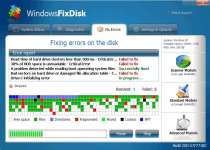 Windows Fix Disk may also attempt to take control of your web browser or interrupt the use of other applications. Although Windows Fix Disk will request that you spend money on Windows Fix Disk to fix your PC problems, what you should really do is remove Windows Fix Disk through your choice of high-quality anti-malware software.
Windows Fix Disk may also attempt to take control of your web browser or interrupt the use of other applications. Although Windows Fix Disk will request that you spend money on Windows Fix Disk to fix your PC problems, what you should really do is remove Windows Fix Disk through your choice of high-quality anti-malware software.
Windows Fix Disk is Far From the First in Its Line of Rogue Threats
Windows Fix Disk is known for being cloned from the same mold as such rogue security programs as Easy Scan, Smart Defragmenter, Win Defragmenter and Windows Disk. Each one of these threats, like Windows Fix Disk, will infect your PC with the help of Trojans and proceed to create many different types of fake errors to create a feeling that your computer is almost on the verge of a breakdown.
Some of the more well-known messages used by the Windows Fix Disk family include:
Low Disk Space
You are running very low disk space on Local Disk (C:).
Windows - No Disk
Critical Error
Hard Drive not found. Missing hard drive.
Critical Error
RAM memory usage is critically high. RAM memory failure.
Critical Error!
Damaged hard drive clusters detected. Private data is at risk.
Critical Error!
Windows was unable to save all the data for the file \System32\496A8300. The data has been lost. This error may be caused by a failure of your computer hardware.
Critical Error
A critical error has occurred while indexing data stored on hard drive. System restart required.
System Restore
The system has been restored after a critical error. Data integrity and hard drive integrity verification required.
The majority of Windows Fix Disk's fake alerts will appear from your Windows task bar, but some will also appear when attempting to launch an application, in which case Windows Fix Disk will usually stop the program from being launched. It should be noted that all of these alerts are inaccurate, and Windows Fix Disk only creates them to make you think that Windows Fix Disk itself is the only thing that can fix your PC.
Windows Fix Disk will also pretend to offer several other security-related features, such as defragging, memory optimization, junk file cleanup, RAM optimization and proactive system protection. Not one of these features is any more functional than Windows Fix Disk's error-detection capabilities.
Fixing Your PC by Deleting Windows Fix Disk
Attempts to uninstall Windows Fix Disk the way you'd uninstall any other program will result in failure by way of Windows telling you that it can't find a randomly-named executable file used by Windows Fix Disk. Although it's possible to remove Windows Fix Disk by simply deleting all of Windows Fix Disk's files manually, this is a suboptimal tactic. Windows Fix Disk uses randomly-named files in multiple locations and makes other alterations to your PC that will need to be undone, such as registering .dll files and adding entries to the Windows Registry.
Fortunately, since Windows Fix Disk is only a slight variant on a well-known threat, any reliable anti-malware application will be capable to find and remove Windows Fix Disk without problems. Don't let the fact that Windows Fix Disk is similar to older threats lull you into running a scanner without the latest updates, however, since Windows Fix Disk is likely to be altered just enough to avoid past detection methods.
If Windows Fix Disk stops you from running the program, you may want to use Safe Mode, which will stop Windows Fix Disk from launching during the startup process. Safe Mode is available on all Windows machines – just tap F8 before Windows loads, and you'll be halfway to removing Windows Fix Disk successfully already.
Technical Details
File System Modifications
Tutorials: If you wish to learn how to remove malware components manually, you can read the tutorials on how to find malware, kill unwanted processes, remove malicious DLLs and delete other harmful files. Always be sure to back up your PC before making any changes.
The following files were created in the system:%ALLUSERSPROFILE%\Application Data\9domlhRkF2C.exe
File name: 9domlhRkF2C.exeSize: 483.32 KB (483328 bytes)
MD5: df55210c3930f758b9e3732cc6ab21a2
Detection count: 97
File type: Executable File
Mime Type: unknown/exe
Path: %ALLUSERSPROFILE%\Application Data
Group: Malware file
Last Updated: January 8, 2020
Additional Information
| # | Message |
|---|---|
| 1 | Activation Reminder
WindowsFixDisk Activation Advanced module activation required to fix detected errors and performance issues. Please purchase Advanced Module license to activate this software and enable all features. |
| 2 | Critical Error
Hard drive critical error. Run a system diagnostic utility to check your hard disk drive for errors. Windows can't find hard disk space. Hard drive error. |
| 3 | Fix Disk
WindowsFixDisk Diagnostics will scan the system to identify performance problems. Start or Cancel |
| 4 | Hard Drive Failure
The system has detected a problem with one or more installed IDE / SATA hard disks. It is recommended that you restart the system. |
| 5 | Low Disk Space
You are running very low disk space on Local Disk (C:). |
| 6 | System Error
An error occurred while reading system files. Run a system diagnostic utility to check your hard disk drive for errors. |
| 7 | Windows - No Disk
Exception Processing Message 0x0000013 |
| 8 | WindowsFixDisk Diagnostics
Windows detected a hard disk error. A problem with the hard drive sectors has been detected. It is recommended to download the following sertified <sic> software to fix the detected hard drive problems. Do you want to download recommended software? |
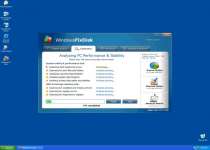
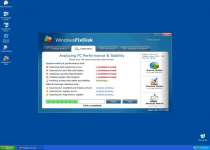
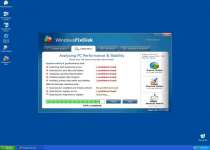
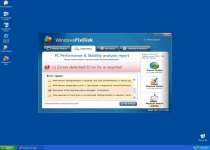
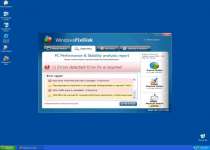
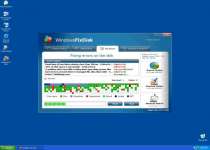
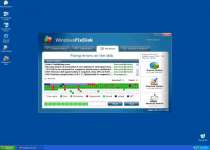
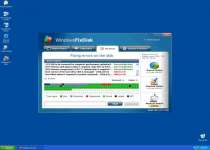
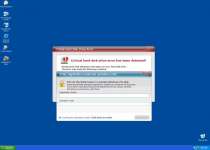
Leave a Reply
Please note that we are not able to assist with billing and support issues regarding SpyHunter or other products. If you're having issues with SpyHunter, please get in touch with SpyHunter customer support through your SpyHunter . If you have SpyHunter billing questions, we recommend you check the Billing FAQ. For general suggestions or feedback, contact us.